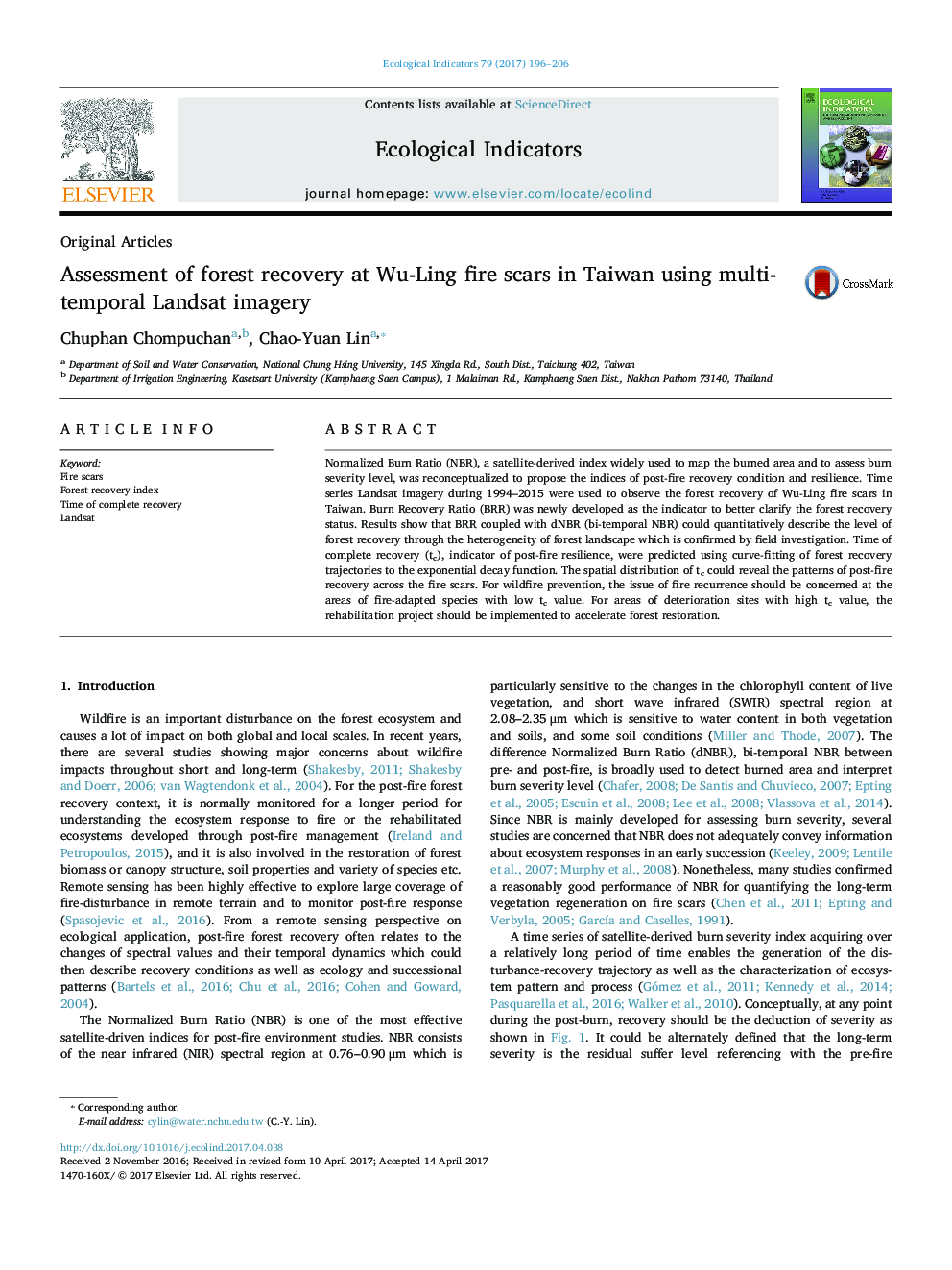| Article ID | Journal | Published Year | Pages | File Type |
|---|---|---|---|---|
| 5741768 | Ecological Indicators | 2017 | 11 Pages |
â¢Burn Recovery Ratio and time of complete recovery (tc) were employed to effectively explore post-fire vegetation recovery.â¢BRR coupled with difference Normalized Burn Ratio could enhance variations of forest recovery condition.â¢Spatial distribution of tc could be used for interpreting forest recovery trend of post-fire management.
Normalized Burn Ratio (NBR), a satellite-derived index widely used to map the burned area and to assess burn severity level, was reconceptualized to propose the indices of post-fire recovery condition and resilience. Time series Landsat imagery during 1994-2015 were used to observe the forest recovery of Wu-Ling fire scars in Taiwan. Burn Recovery Ratio (BRR) was newly developed as the indicator to better clarify the forest recovery status. Results show that BRR coupled with dNBR (bi-temporal NBR) could quantitatively describe the level of forest recovery through the heterogeneity of forest landscape which is confirmed by field investigation. Time of complete recovery (tc), indicator of post-fire resilience, were predicted using curve-fitting of forest recovery trajectories to the exponential decay function. The spatial distribution of tc could reveal the patterns of post-fire recovery across the fire scars. For wildfire prevention, the issue of fire recurrence should be concerned at the areas of fire-adapted species with low tc value. For areas of deterioration sites with high tc value, the rehabilitation project should be implemented to accelerate forest restoration.
